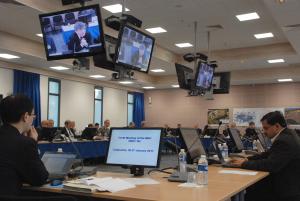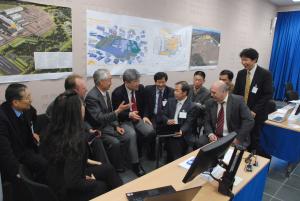MAC develops guidelines for additional direct investment
4 Feb 2011
-
Sabina Griffith
Additional direct investments were the focus of the 10th meeting of the ITER Management Advisory Committee (MAC).
At its 10th meeting held on 26-27 January 2011, the ITER Management Advisory Committee (MAC) looked at a detailed analysis of additional direct investments that had been performed by the ITER Organization and the seven Domestic Agencies in response to the request from the ITER Council at its seventh meeting in November (IC-7).
These additional investments are the items deemed essential for the operation of the ITER machine, but that are not presently part of the ITER Baseline.
These additional investments are the items deemed essential for the operation of the ITER machine, but that are not presently part of the ITER Baseline.
The Baseline that describes the scope, schedule and cost for the construction phase of the ITER Project was approved by the extraordinary ITER Council in July last year.
The total value of the project's construction costs was capped at 4,700 kIUA*, including a contingency of 115.3 kIUA. It was agreed that any additional necessary resources were to be made available within this capped value.
Take a break, have a chat: ITER Director-General Osamu Motojima and members of the MAC taking the discussion off-line.
During its meeting, the MAC developed guidelines that will be used to evaluate the allocation of responsibilities and credit values associated with additional direct investment based on the capped ceiling. Following these guidelines, future risks will now be accounted for.
MAC encouraged the ITER Organization to continue pursuing reduction in the overall cost of the ITER Project and efforts to accelerate its schedule.
* ITER Units of Account (IUAs) are the ITER "currency," a very unique feature of the ITER Project based on the principle of procurement sharing. Instead of contributing cash to the project, the Members will provide "in-kind" contributions; all of the components of the ITER facility will be built by the seven ITER Members and delivered to the ITER site in France. The IUA was devised in order to measure the value of in-kind contributions consistently over time, and neutralize market fluctuations.



